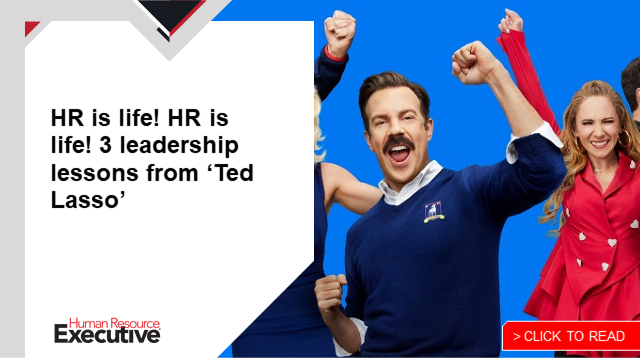Meetings in the near future may take place in the “metaverse,” a network of 3D virtual worlds that will be powered by leading social media and software giants like Facebook, Apple and Microsoft. And, according to new research, younger employees are ready for this new paradigm—which means HR needs to be ready, too.
According to Microsoft’s expansive 2022 Work Trends Index, 51% of Gen Z and 48% of millennials expect to conduct a portion of their work in the metaverse in the next two years. A slight majority (52%) of employees say they are open to using digital immersive spaces in the metaverse for meetings or team collaborations in the next year, while 47% of workers are ready to adopt an avatar to represent themselves in virtual meetings in the same timeframe.
Meanwhile, just 16% of employees doubt they will conduct any work in the metaverse and 13% of employees don’t know the meaning of the term.
Related: 10 newer HR truths for the HR tech market
 Jared Spataro, Microsoft’s corporate vice president, Modern Work, however, explained the metaverse as “just an additional space” for work, during his preview Tuesday of the research to HR leaders attending the Institute for Corporate Productivity’s i4cp Next Practices annual conference, which is taking place virtually and live in Scottsdale, Ariz., this week.
Jared Spataro, Microsoft’s corporate vice president, Modern Work, however, explained the metaverse as “just an additional space” for work, during his preview Tuesday of the research to HR leaders attending the Institute for Corporate Productivity’s i4cp Next Practices annual conference, which is taking place virtually and live in Scottsdale, Ariz., this week.
After two years of many employees doing 100% of their work in a digital space, the metaverse is just another tool, he said. The metaverse will be introduced this year into Microsoft Teams via avatars, he said. Although he acknowledged that not everyone will embrace the idea, he says the tools have an important role to play in boosting inclusivity, accessibility, collaboration and making remote or hybrid work easier.
“Today, we have a binary choice on a video call for the camera: It’s either off or it’s on,” Spataro said. “But there are many times and many situations where you want to indicate that you’re involved in the meeting, but you just can’t have your camera on.”
Related: Registration for HR Tech 2022 in Las Vegas is now open
Someone in transit, eating lunch or surrounded by playing children, just to name a few examples, might join a meeting with their avatar instead. The avatars will be customizable and powered by AI to reflect subtle movements and gestures based on your voice and actions. They’ll also translate languages to connect teams and provide a digital whiteboard where co-workers can collaborate.
This will be a profound shift from the video meetings that HR leaders and employees know today, to say the least. “Leaders need to consider how emerging technologies like the metaverse and AI can augment collaboration and facilitate co-creation and creativity in a distributed work world,” researchers wrote in the 2022 Work Trends Index.
 The report is based on a study of 31,000 people in 31 countries, plus analysis of user data from Microsoft 365 and labor trends gathered from LinkedIn.
The report is based on a study of 31,000 people in 31 countries, plus analysis of user data from Microsoft 365 and labor trends gathered from LinkedIn.
New pressure for managers
Apart from highlighting the need for HR to embrace emerging technologies, the report also suggests that leaders and managers are facing new pressures as employees continue to express interest in leaving their current jobs in the year to come.
In media reports and analyses on the Great Resignation, managers are often blamed for the exodus of employees who describe themselves as overworked, uninspired and undervalued. The conventional wisdom that employees don’t leave bad companies, they leave bad managers has become accepted business knowledge, and as a result, the Work Trends Index authors write, “[m]anagers feel wedged between leadership and employee expectations.”
The report discovered that 74% of managers say they don’t have the influence or resources to make change for employees, and 54% of managers say leadership is out of touch with employees.
“The past two years have taught us that culture will stand or fall with managers.”
“The past two years have taught us that culture will stand or fall with managers. But many … feel powerless to drive change for their team,” write the Work Trends Index authors.
One area where employees expect change is when it comes to remote and hybrid work. The report found that 50% of organizations already require or plan to require full-time, in-person work in the year ahead. This rate jumps for manufacturing (55%), retail (54%) and consumer goods (53%) spaces.
Employees have other ideas: More than half (52%) say they are likely to consider shifting to hybrid or remote work in the year ahead—and jobs that offer this arrangement are growing dramatically. LinkedIn, for instance, found that 1 in 67 U.S. jobs offered a remote work option in March 2020; today, that number is about 1 in 7. Also, these remote jobs attract 2.6 times more views and nearly three times more applicants compared to exclusively on-site roles.
Ultimately, leaders must make the office worth the commute, Spataro said. He noted the real tension between the employees who want to stay flexible (70%) and the 50% of leaders who are planning for a full-time return to the office.
 “This is a moment for leaders to really create value,” he said. “And what we mean by that is leaders, especially those 50% who say, ‘We are going back to the office,’ they need to really think, well, why are we going back to the office? What is the role of that physical space?”
“This is a moment for leaders to really create value,” he said. “And what we mean by that is leaders, especially those 50% who say, ‘We are going back to the office,’ they need to really think, well, why are we going back to the office? What is the role of that physical space?”
After two years of working in a hybrid world, employees say they need a concrete reason for coming into the office, according to the report. It found that 38% of hybrid employees say their biggest challenge is knowing when and why to come into the office but only 28% of firms have established team agreements to clearly define the new work norms.
Inspiring workers to see the office as a useful venue for their careers will take “radical intentionality,” according to the authors.
“There’s no one-size-fits-all approach: Experiment with ‘Team Tuesdays’ or in-person office hours between 12 p.m. and 2 p.m., two days a week. Consider quarterly off-sites that bring far-flung teammates together regularly,” they write. “The key is for managers to provide clear guidance to employees as they experiment and learn what works for the team.”
Editor Elizabeth Clarke contributed to this report.
The post The big workplace trends coming our way, based on Microsoft research appeared first on HR Executive.